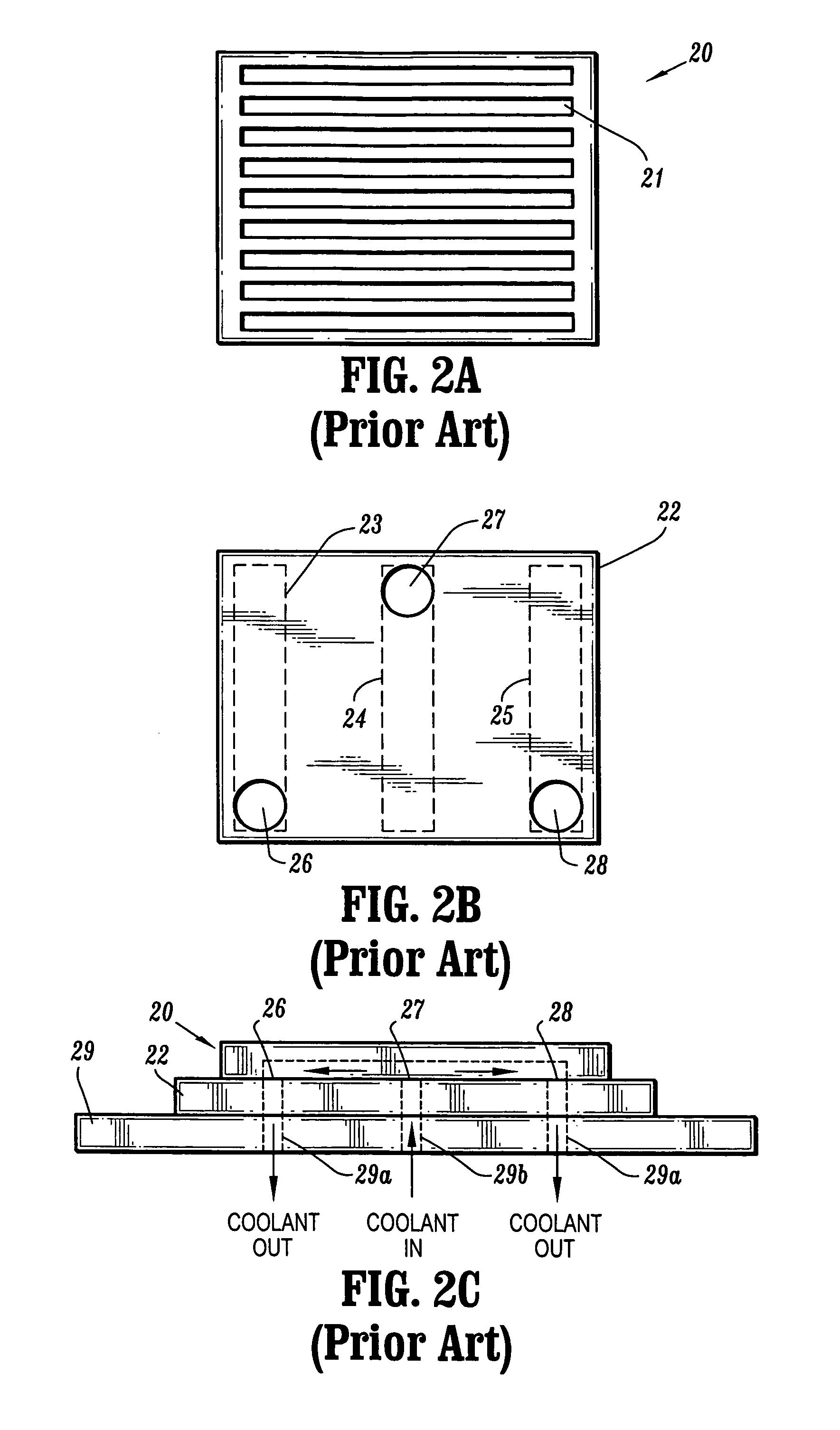Apparatus and methods for microchannel cooling of semiconductor integrated circuit packages
a technology of integrated circuits and cooling apparatuses, which is applied in the direction of power cables, semiconductor/solid-state device details, cables, etc., can solve the problems of increasing system performance limitations, increasing power density, and increasing the difficulty of efficiently removing heat, so as to achieve efficient and low operating pressure microchannel cooling, uniform flow and distribution of coolant fluid, and minimize pressure drop
- Summary
- Abstract
- Description
- Claims
- Application Information
AI Technical Summary
Benefits of technology
Problems solved by technology
Method used
Image
Examples
Embodiment Construction
[0030]Exemplary embodiments of the invention as described herein generally include apparatus and methods for cooling of electronic devices and, in particular, apparatus and methods for microchannel cooling of IC (integrated circuit) chips mounted face down on a package substrate. In general, an apparatus for microchannel cooling an electronic device according to one exemplary embodiment of the invention comprises an integrated microchannel cooler device (or microchannel heat sink) that is thermally bonded to a non-active surface of an IC chip mounted face down on a package substrate, and a fluid distribution manifold device, which is removably coupled to the integrated microchannel device via a mechanically compliant gasket, to deliver coolant fluid to / from the integrated microchannel device. As explained below, microchannel cooling apparatus and methods according to various exemplary embodiments of the invention implement fluid distribution and flow mechanisms which foster uniform ...
PUM
 Login to View More
Login to View More Abstract
Description
Claims
Application Information
 Login to View More
Login to View More - R&D
- Intellectual Property
- Life Sciences
- Materials
- Tech Scout
- Unparalleled Data Quality
- Higher Quality Content
- 60% Fewer Hallucinations
Browse by: Latest US Patents, China's latest patents, Technical Efficacy Thesaurus, Application Domain, Technology Topic, Popular Technical Reports.
© 2025 PatSnap. All rights reserved.Legal|Privacy policy|Modern Slavery Act Transparency Statement|Sitemap|About US| Contact US: help@patsnap.com



